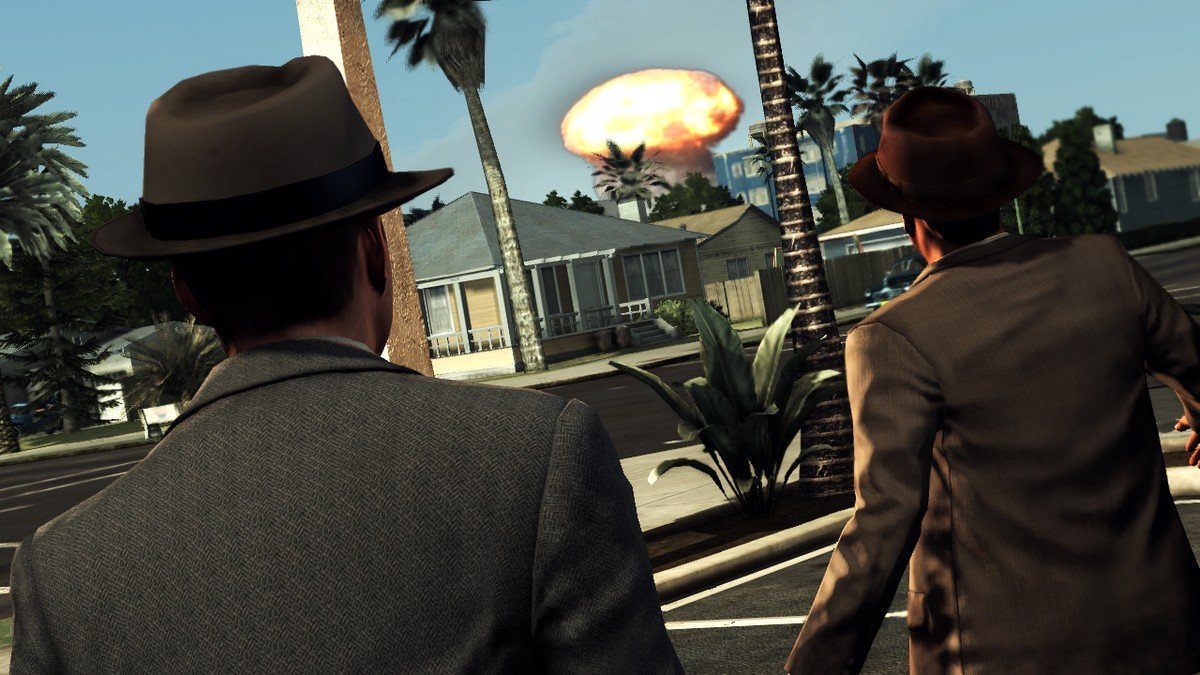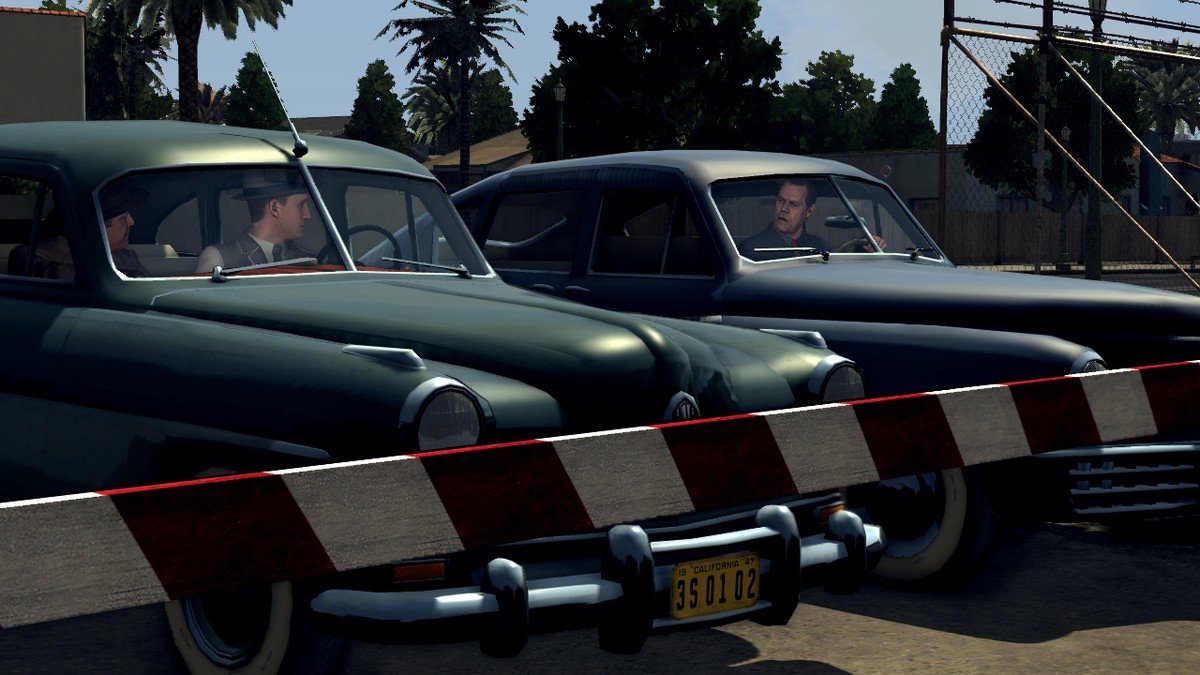L.A. Noire Q&A - Downloadable Cases and More
Game director Brendan McNamara chats with GameSpot about upcoming DLC and how L.A. Noire has been received by the public.
Team Bondi's period crime thriller L.A. Noire has been one of the most talked-about games since its release last month, and with a slate of downloadable cases on the horizon, it doesn't look like that chatter will be dying down anytime soon. The latest DLC is out today, and we talked to game director Brendan McNamara to see how he has dealt with the reaction to his game and how these new cases will fit into the overall structure of the game.
GameSpot: Now that L.A. Noire has been out for a while, what has been the biggest surprise for you in terms of how it has been received by the public?
Brendan McNamara: We are really happy with the response, especially for a new IP and what we think is a new type of game. For me personally, it was surprising to see people play the game through in marathon sessions, especially the first couple of weeks. I expected that people would play a case at a time or a couple of cases at a time rather than straight through, so that was an eye-opener. Another interesting aspect is that many of the cases can be played through in different ways, and we are only just starting to see people realize that on second playthrough.
One interesting aspect is that the "doubt" option in the conversations was originally "force"--with the idea that you try and force an answer out of someone who was holding back on you, and so Phelps gets pretty tough with the person he is interrogating. Because there was more to it than simply forcing someone to elaborate--sometimes gentle coaxing is required--we settled on the catch-all term of "doubt." However, due to the fact that many of the key actions under the doubt option are forceful, there are quite a few people that think Aaron Staton's performance is slightly psychotic on the doubt option. That's down to me and not Aaron!
GS: In the past you've talked about the amount of content the team originally came up with for L.A. Noire--cases that never made it into the game, or even entire desks. Now that players are familiar with the story, can you shed some light on the process of determining what ultimately made it onto the disc? On the flip side, how did you determine which cases would be best suited for DLC?
BM: I had put a lot of work into creating the narrative backbone for the game, but it was pretty clear from very early on that there was more story than we were ever going to be able to fit into the game itself. We created a database of over 1800 crimes for 1947 based on what we'd found in the four major newspapers of the time and broke them up into traffic, burglary, bunco, homicide, vice, and arson because that's how the LAPD Detective Bureau was divided up back then. We had so much to work with that some material never made it past the conceptual stage: we never ended up shooting capture or creating substantial code for burglary and bunco, for instance, although they were part of the original idea.
In addition, we had strong ideas for several big cases that didn't tie in to the main story arc but that had great potential on their own, like Naked City and Nicholson Electroplating. Once the game itself was close to complete, we could turn our attention to those cases, as their story and structure were perfect for DLC. We left homicide as one complete desk because it has its own overarching story within the desk.
GS: Tell us about the upcoming downloadable case, Nicholson Electroplating. What's happening in this case, and how does it compare with some of the other arson desk crimes?
BM: Without spoiling anything, the cases of the arson desk are tightly linked to the main plot thread of the game, and they have their own momentum as they build up to the game's finale. By contrast, Nicholson works much better as a stand-alone case, and it has its roots in a real-life incident that made headlines across America for days afterward.
GS: Some of the cases in the game are more historically rooted than others. Where does Nicholson Electroplating fall in that spectrum?
BM: Nicholson Electroplating is based on one of the largest industrial accidents in California history: On February 20, 1947, the O'Connor Electroplating plant in downtown Los Angeles exploded so powerfully that a massive mushroom cloud appeared over downtown L.A. Debris was raining down in the San Fernando Valley, miles away from the blast event. It became the first ever outside TV news broadcast, and the mayor showed up to calm the public as a lot of people thought L.A. had been nuked. The circumstances of the real-world case are fascinating and involve plenty of deception and mystery. For the in-game case, we've added a few extra layers of intrigue and a few set pieces that make it a large and satisfying chunk of gameplay.
GS: L.A. Noire is interesting in the way that there are all these self-contained cases with their own beginnings and ends, but also a slowly building story that goes from light foreshadowing to full-on overarching narrative. How did you look at the story and decide how and when players would be able to access these DLC cases within the overall structure of the game?
BM: We knew the DLC cases would be stand-alone stories that the player could access at any time, but we also knew that they would be from different desks in the game's timeline. They were designed to drop back in to each desk in the flow of the game, but they don't contain any of the overarching plot. So when a player decides to play one of the DLC cases, they'll be working alongside their partner from that desk. In the case of arson, it's Herschel Biggs. For Reefer Madness, an administrative vice case, you'll be partnering back up with the smooth-talking Roy Earle.
GS: In the case of Nicholson Electroplating, how do you expect the reactions to compare between players who have completed the game and those who haven't?
BM: The case is big--it should take an accomplished player over an hour to complete at least, while a player taking their time to get the most out of a case could take 90 minutes to two hours--so we think it will be very satisfying to everyone. If you haven't reached the arson desk, it still makes sense in its own right, and it isn't related to the thread that runs through the other arson cases. Players who've finished the game will enjoy returning to some of their favorite characters with a little extra insight into what makes them tick, while players who haven't finished will be getting a chunky, surprise-filled case. If you haven't completed the game, I'd recommend downloading Nicholson Electroplating and playing it within the main game flow.
Got a news tip or want to contact us directly? Email news@gamespot.com



Join the conversation